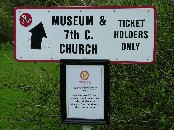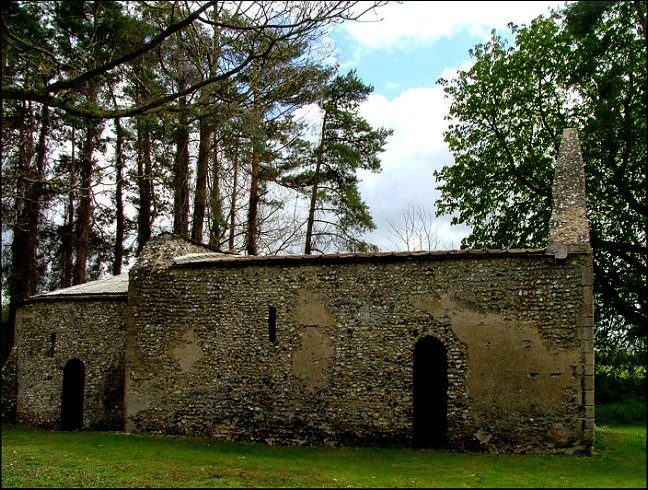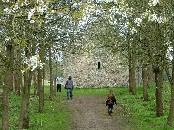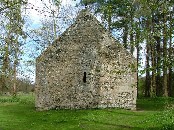| |
|
St Mary,
Cockley Cley
 |
|
We'd
come to Cockley Cley because we wanted to see
something advertised as The Iceni Village.
It would turn out to be a rather dubious
construction which included a snake pit and some
gruesome severed heads on sticks. The grounds
also include a nature trail, which I think is
just about the only place I've ever been in
Norfolk where I didn't see any nature. As we'd
come into Cockley Cley I'd had to do a double
take, because I thought I'd seen a sign saying 7th
century church. I took a closer look. No, it
really did say that. How odd. The oldest
part of any church in East Anglia is generally
accepted as being the tower at East Lexham, which
probably dates from the early 10th century. What
on earth was going on?
|
On closer
inspection, the sign also said Ticket Holders Only.
It turned out that this meant people who bought tickets
for the Iceni village, and so we didn't need to be
fleeced twice. Feeling rather like someone entering a Ripley's
Believe It Or Not! museum, I led my family up to the
church.
Well, it
was rather good. Of course, it isn't 7th century at all.
St Mary is a two-celled Norman church that was built
about 1100, I should think. The east end is apsed, and
there is a very narrow chancel arch. The church became
redundant at the Reformation, and was converted into a
cottage. In the 1950s, it was scheduled for demolition,
but Norman stonework was revealed and the church was
discovered under the skin of the cottage, so to speak.
The local landowner, Sir Peter Roberts of Cockley Cley
Hall, oversaw the restoration.
As a 12th
century Norman church, St Mary is contemporary with such
well-known Norfolk churches as Hales and Heckingham, and
has none of the later restorations and additions that
they underwent. A certain amount of suspension of
disbelief is required; there are no two-headed babies or
men who can eat broken glass, but there is a 'genuine'
Roman coffin and a memorial that claims to be the last
resting place of St Fursey's brother. As Fursey arrived
in East Anglia in about 630 AD, the body must have been
kicking around for half a millennium before it was laid
to rest here. I doubt that it is really St Fursey's
brother.
It seems a
pity that this pretty little building has to pretend to
be something that it isn't. I couldn't possibly suggest
that you take a look at it without buying a ticket, but
the admission fee also gives you access to the splendid
Cockley Cley museum next door, a 17th century cottage
that has been fitted out with contemporary features, and
which must be a real boon to the village school. The
Iceni village is worth a look too I suppose, if only for
a giggle, but I should give the nature trail a miss
unless you fancy a rest from nature.
Simon Knott, May 2006
Postscript, 2021: I'm told that the
Iceni Village at Cockley Cley has been closed for a
number of years.
|
|
|



